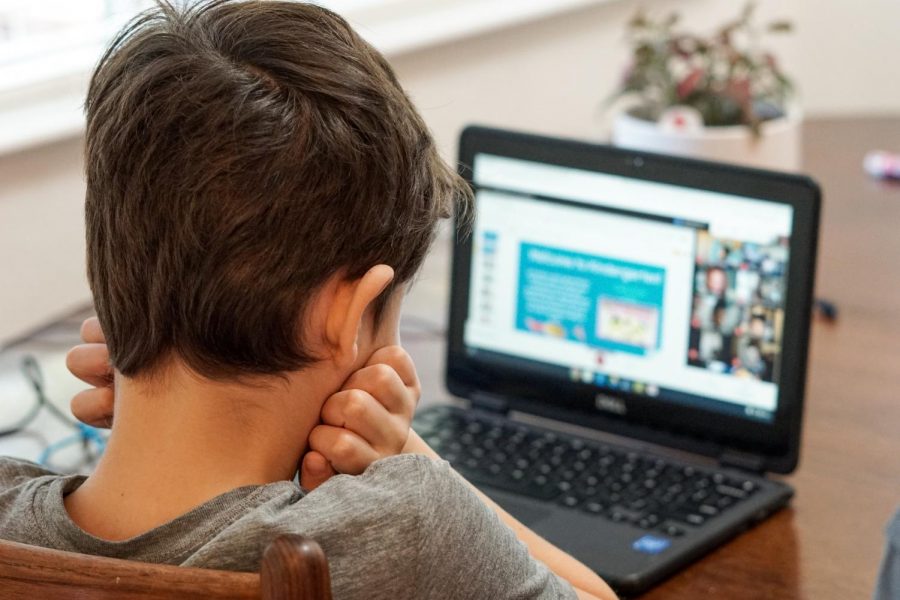Elementary Schools Navigate Online Learning
September 21, 2020
As Laura Peers, a third grade teacher at Sleepy Hollow Elementary School, sends off her students for their daily lunch break, an eager-to-swim student quickly pulls down his pants to change into his swimsuit, entirely forgetting to leave the Zoom call or turn off his camera. “I quickly got away from it. Hopefully, other kids didn’t notice, but it was very obvious to me,” Peers said. For elementary school teachers running their classrooms on Zoom now, these unfortunate instances are quite frequent.
Elementary schools in the Orinda Union School district are trying their best to imitate a normal school day virtually Tuesday through Friday students start off their day with a half hour morning meeting at 8:30 AM to check in. The students then have three 45 minute essential subject classes, which include reading, writing, and math. These are spaced out throughout the day with 10-45 minute breaks. On Mondays, instead of essential subject classes, students get to participate in art, PE, music, social studies, and science classes.
Teachers must use alternative methods because of online learning, such as Zoom, Google Classroom for the olders students, and Seesaw for the younger kids. Kids can also pick up worksheets and workbooks every week that they will use during class. Allison Bingham, a fifth grade teacher at Glorietta Elementary School, has found it helpful to have the students keep their cameras on to make sure they stay focused. Other popular tricks for teaching virtually include using breakout rooms frequently to mimic table groups, blurting out when a student doesn’t understand, and continuing to treat it like real school.
For elementary students, it can be hard to focus during school, especially since they are in their own home and have so many distractions available to them. Teachers find it hard because they don’t know what their students are looking at and feel conflicted because they don’t want to call a student out for what they are doing. Peers uses a program called GoNoodle, a website that creates short activities for kids, and she enjoys giving random scavenger hunts for the kids within their house to give them a brain break. Most teachers use stretch breaks, break out rooms to talk about their day, or mention something fun to get their attention.
“It’s super hard because you’ll see them playing with balloons, playing with dogs, playing with anything in their room, and I have to be the mean one who says ‘Um hello, come back and stop putting the balloon in your face, that’d be awesome,’” Bingham said.
According to Peers and Bingham, math is by far the most difficult to teach online because they can’t interact one on one. Students often have questions but are too embarrassed to ask in front of their peers. It is also hard to assist students when teachers can’t see the student’s work to notice where they are going wrong. “I see kids floundering, and I can’t get to them. It’s so frustrating to see these sweet little ones saying, ‘I just don’t get it,’” Bingham said. Even if schools moved to a hybrid learning method, social distancing rules would limit how interactive teachers can be while teaching or helping their students.
“I think I’m learning a lot, it just isn’t the same,” 5th grade Glorietta student, Jake Williams, said.
Bingham, Peers, and other teachers are hoping to return to school as soon as possible to get back to normal learning styles and fully support their students. From tongues in the camera and burping out loud, to dropping computers and getting in trouble by parents, online school has been anything but normal for teachers.E







